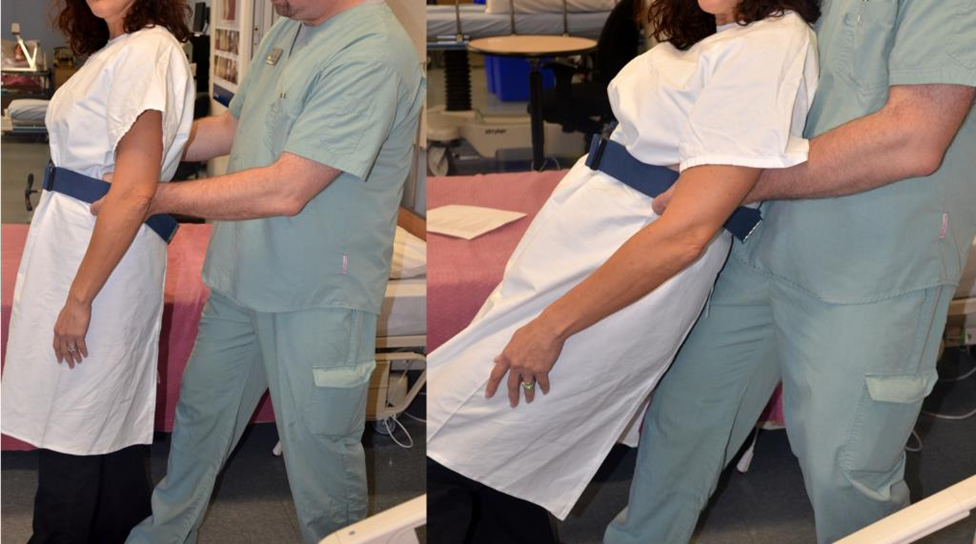A nurse is reinforcing teaching with a client about using a cane for ambulation. Which of the following statements should the nurse make?
"Advance the cane 12 inches forward when walking."
"Hold the cane on the side of your affected leg when walking."
"Keep the cane at the same level as the affected leg when climbing stairs."
"Move your unaffected leg before your affected leg when walking."
The Correct Answer is D
A. Advancing the cane 12 inches forward when walking is not a standard instruction for cane use. Typically, the cane is advanced a short distance ahead of the individual's affected leg to provide support and stability during ambulation.
B. Holding the cane on the side of the affected leg does not provide adequate support and stability to the affected side while walking.
C. When climbing stairs, the cane should be held in the hand opposite the affected leg to provide support and balance. Placing the cane at the same level as the affected leg may
lead to imbalance and difficulty ascending stairs safely.
D. This is because when using a cane for ambulation, the cane should be held on the stronger side of the body, and the user should move the cane forward simultaneously with the affected (weaker) leg. Then, the stronger leg is moved forward, which helps in maintaining balance and stability during walking.
Nursing Test Bank
Naxlex Comprehensive Predictor Exams
Related Questions
Correct Answer is B
Explanation
A. The lateral position refers to lying on one side with the top hip and knee flexed and the bottom hip and knee slightly flexed.
B. Dorsiflexion is the movement of the ankle joint in which the toes are brought closer to the shin or upward, as in the supine position described.
C. Contracture refers to the shortening or tightening of muscles, resulting in the inability to move the affected joint fully.
D. Plantar flexion is the movement of the ankle joint in which the toes are pointed downward or away from the shin, opposite to the position described.
Correct Answer is B
Explanation
A. Keeping the back bent while lowering the patient is not the most appropriate postion.
B. when a patient begins to fall, it is important to control the descent to minimize injury.
The nurse should widen their stance, bring the patient's body close to provide support, bend their knees, and use the strength of their thighs to lower the patient to the ground safely.

C. Keeping the knees straight while lowering the patient increases the risk of strain or injury to the nurse's back.
D. Holding the patient upright may not be feasible if the patient is already falling, and attempting to do so may result in injury to both the patient and the nurse.
Whether you are a student looking to ace your exams or a practicing nurse seeking to enhance your expertise , our nursing education contents will empower you with the confidence and competence to make a difference in the lives of patients and become a respected leader in the healthcare field.
Visit Naxlex, invest in your future and unlock endless possibilities with our unparalleled nursing education contents today
Report Wrong Answer on the Current Question
Do you disagree with the answer? If yes, what is your expected answer? Explain.
Kindly be descriptive with the issue you are facing.
